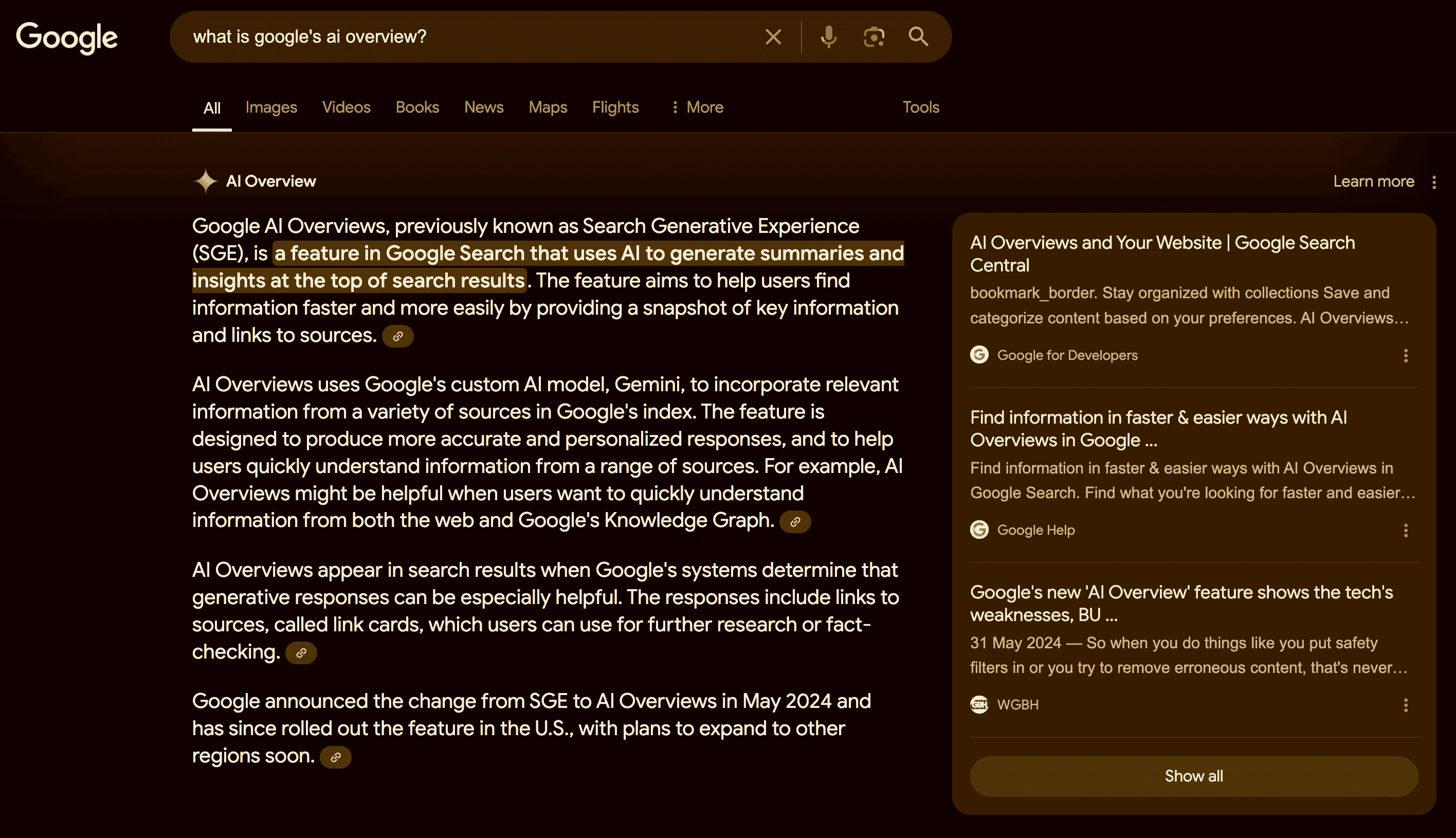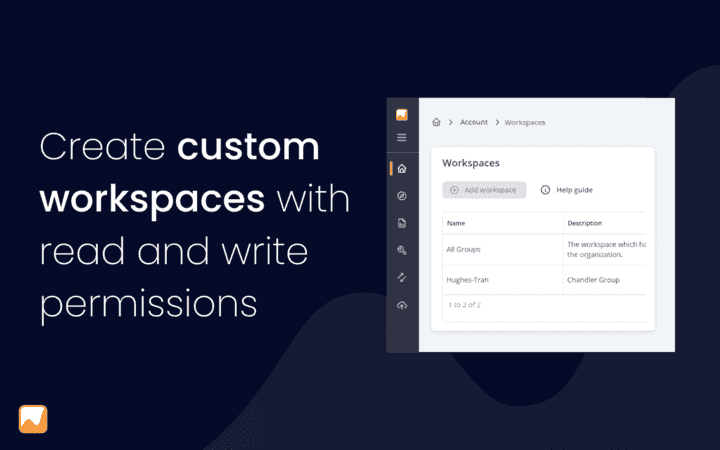How to Maximize Organic Visibility with SERP Features [Explained]
Last updated on Tuesday, November 14, 2023
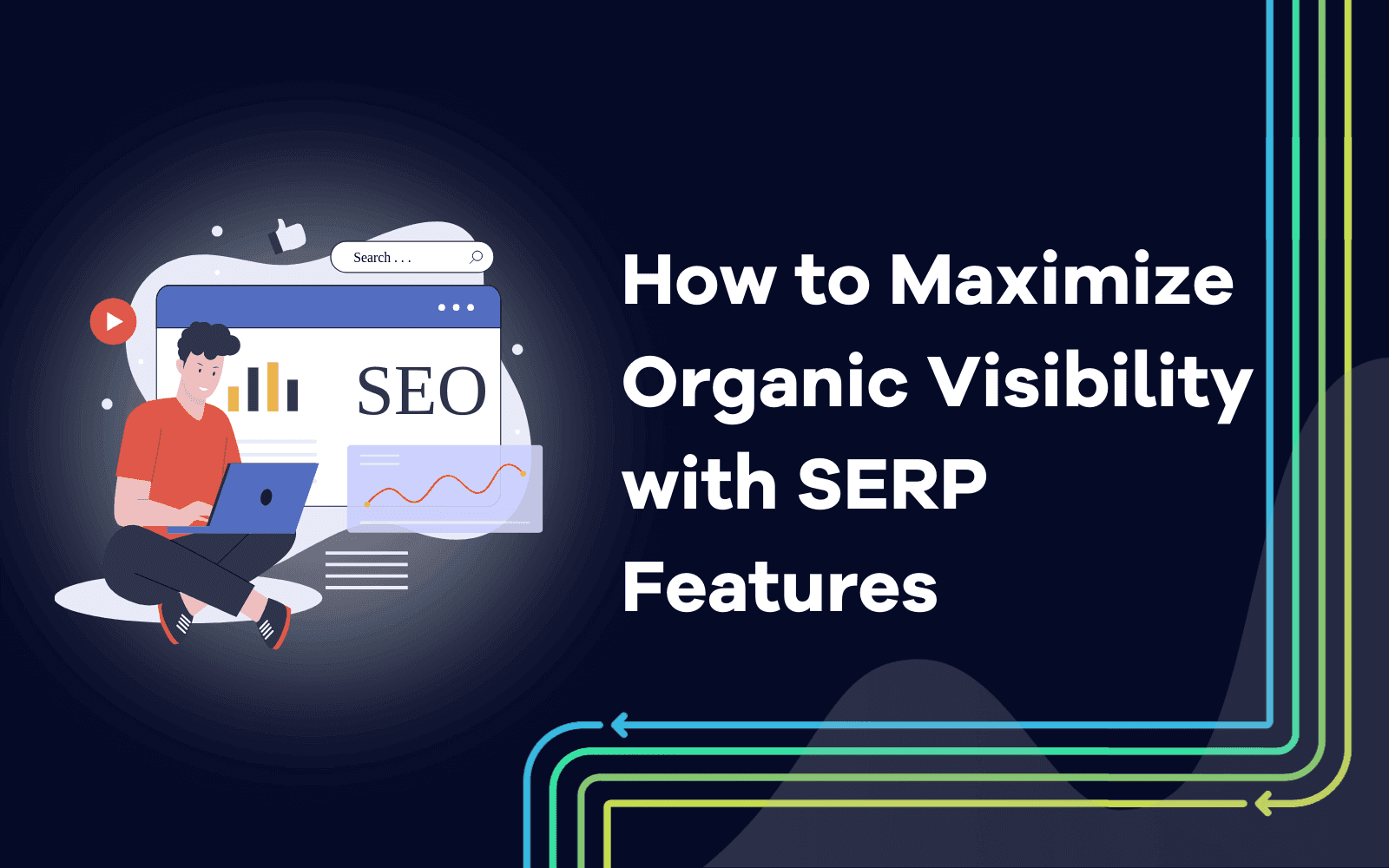
The only constant in digital marketing is change. And businesses need to stay ahead of the curve to be successful online. One way to do this is to optimize your content for SERP features.
SERP features are attention-grabbing snippets, reviews, videos, and other content that appear at the top of search engine results pages (SERPs). They can help to increase your organic visibility and drive more traffic to your website.
This post will discuss SERP features in more detail and provide tips on optimizing your content to boost organic visibility.
What are SERP features?
SERP features (rich results or featured snippets) are special elements that appear above or next to organic search results (those blue links) on a search engine results page.
Studies reveal that 11% of 5.5 million SERPs have featured snippets. That means there’s a significant opportunity for websites to improve their visibility and traffic by optimizing for SERP features.
Here's a list of key SERP features that you need to know about:
#1. Featured snippets
Featured snippets are brief summaries of websites that directly respond to user search queries. They're usually displayed above the organic results at the top of the search engine results page (SERP).
Featured snippets can be in the form of text, lists, tables, or images. Here’s an example of a text snippet:

Websites featured in the snippet position can experience a significant increase in click-through rates (CTR) with over 35% of all clicks.
#2. Knowledge panels
These boxes appear in Google Search when you search for entities (people, places, organizations, and things) that are in the Google Knowledge Graph.
They're meant to help you get a quick snapshot of information on a topic based on Google's understanding of available content on the web.
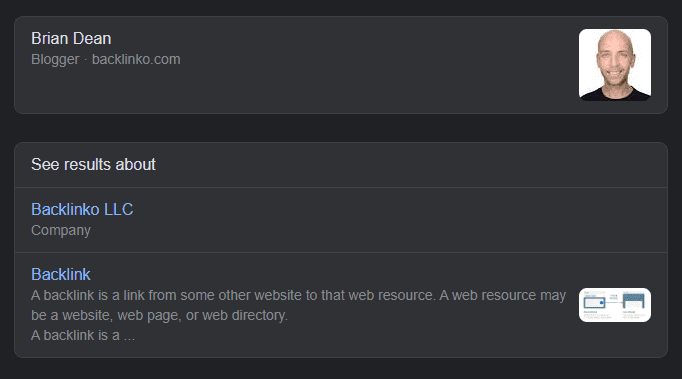
#3. People also ask
Most people search Google in a question format. And that’s where you unlock a treasure trove of information using the People Also Ask Google SERP feature.
The section of the SERP displays users’ related questions on the same search topic. By understanding the exact questions people are asking Google, you can create more relevant and useful content for your audience.
For example, Termly is a leading brand offering a free terms and conditions generator for small businesses. By carefully embedding FAQs regarding their terms and conditions on product and resource pages, Termly has earned coveted spots in the People Also Ask feature snippet.
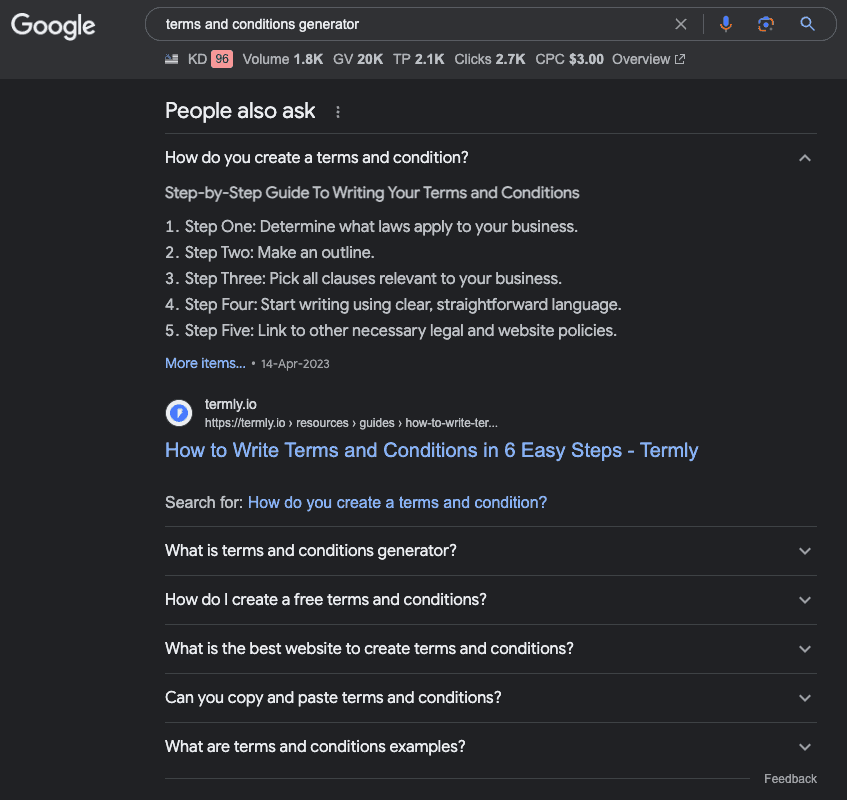
This strategic move demonstrates their commitment to their users' needs and helps them attract significant organic traffic.
#4. Local packs
These boxes appear at the top of Google Search results for searches with local search terms.
They typically include the Google Business profile details like the business's name, physical location, phone number, website, and customer reviews or ratings.
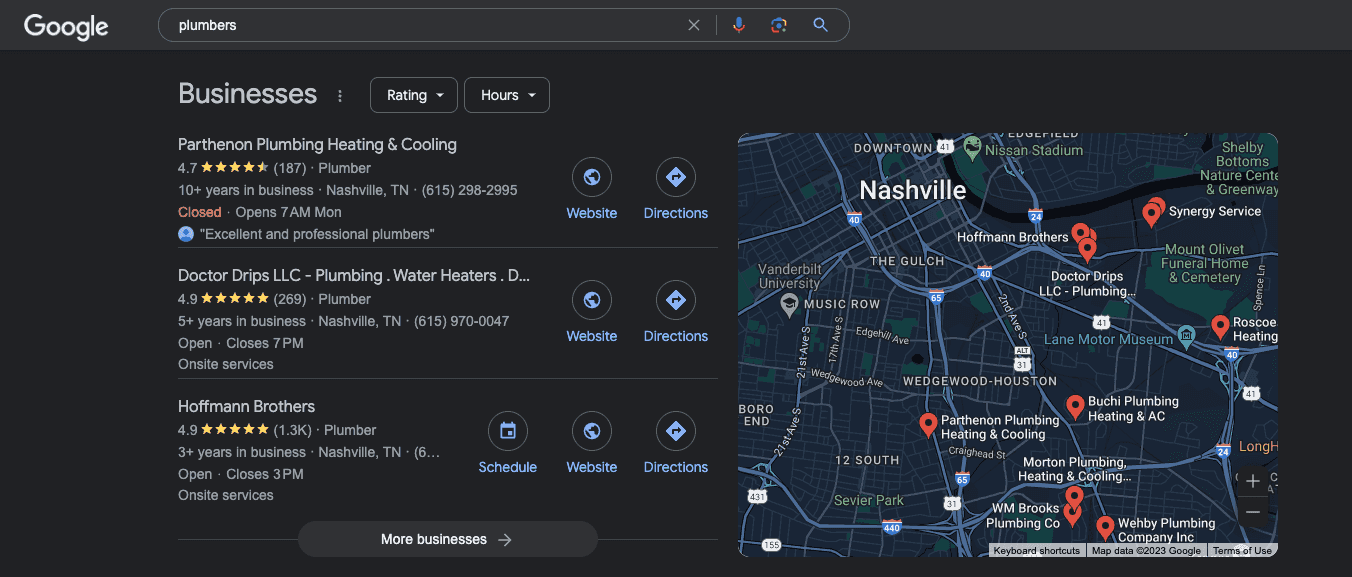
Local packs can be a great way to find businesses nearby, such as restaurants, shops, and service providers.
#5. Image packs
Google and images go together like peanut butter and jelly. Image packs appear at the top of Google search results for searches that are likely to produce images (think cute animals, sofas, shoes, etc.).
They typically include a carousel of images relevant to the search query. Image packs can be a helpful way to see images of products, places, or events.
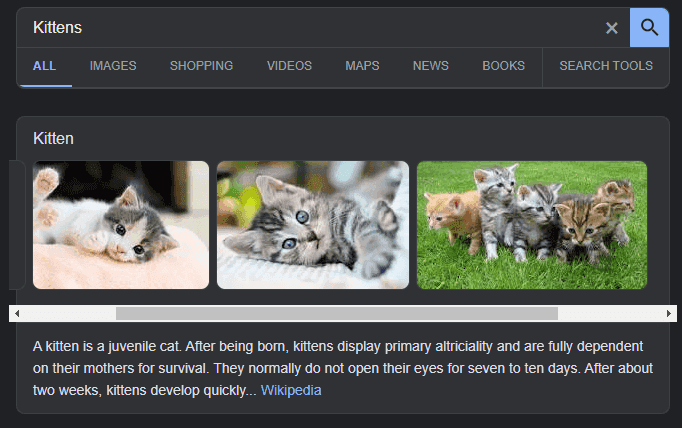
#6. Video carousels
Looking for a quick video how-to tutorial? You probably found your video through a video carousel.
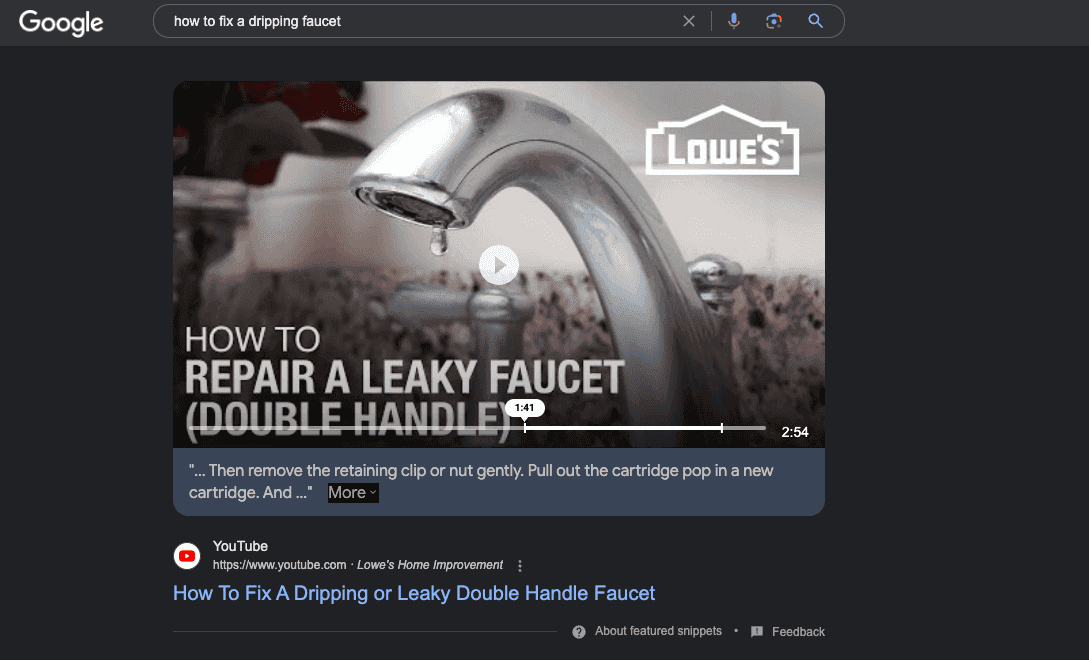
These snippets are a helpful way for searchers to find videos of products, tutorials, or news events.
#7. Sitelinks
These additional links sometimes appear below the organic search results on a Google SERP.
Sitelinks provide direct access to specific sections or pages of a website, making it easy for users to navigate and find relevant content without going through the main website's homepage.
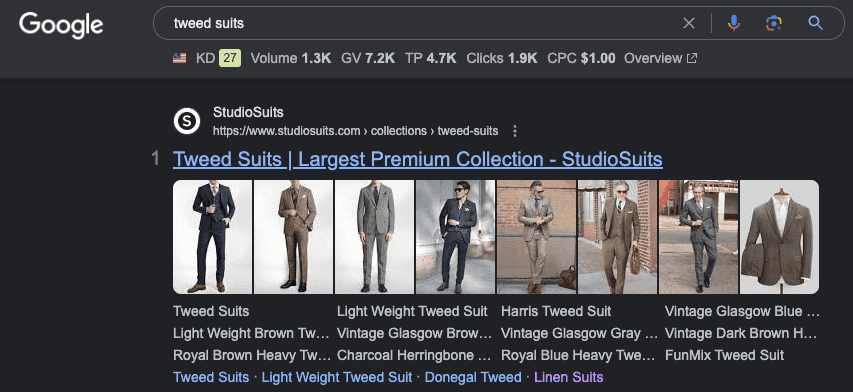
Consider the case of StudioSuits, a distinguished brand specializing in a diverse range of suits, including tweed, wool, and linen suits for men. StudioSuits has earned sitelinks on the SERP by strategically optimizing its product pages.
The result? A better user experience for directing traffic to the proper pages for purchase, improving conversion rates.
6 tips for using SERP features to boost your online visibility
Here are some ways to increase your chances of earning SERP features on Google:
Tip - 1. Do keyword research
The first step to using SERP features to increase your visibility online is to perform keyword research.
Your goal? Find the keywords likely to trigger the SERP features you're looking to land. You can use tools like Google Keyword Planner, SEMrush, and Ahrefs to help you.
These tools share data-backed insights into how often different keywords are searched (keyword volume) and how competitive those keywords are (keyword difficulty).
Once you've identified the keywords you want to target, you must dig deeper to understand their use in search results. This verification process will help you create content optimized for the SERP features you want to rank for, giving you a better chance of securing that spot.
For example, if your target keyword is "how to choose the best digital marketing agency," you may find that featured snippets are often triggered for that keyword.
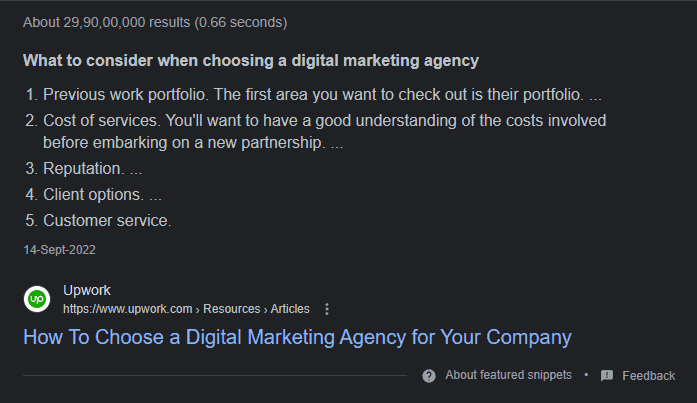
If you can create content that answers the question "How to choose the best digital marketing agency," you'll have a good chance of ranking high for the featured snippet.
Tip - 2. Create high-quality content that answers the user query
Once you know which Google SERP features your target keyword triggers, it’s time to create high-quality content that answers the search query.
Your content must be well-written, informative, and relevant to the searcher's intent. To help with your writing process, follow Google’s content helpfulness guidelines.
There are also a few simple things that you can do to help Google choose your page for featured snippets:
Make your content easy to navigate with headings (including H2s, H3s, H4s, etc.)
Add images, GIFs, or videos to add meaning to your content
Use numbered or bulleted lists where appropriate
Cut your content into small chunks

Tip - 3. Use structured data markup
Often known as schema markup, this piece of code communicates directly to search engines, giving them more informed insights about the content of your page.
Structured data allows search engines to produce richer search results, making your website more appealing and informative to users at a glance.
For instance, rich snippets of star ratings to product prices provide a snapshot of your content, luring more clicks.
Structured data can lead to the appearance of a knowledge panel — a comprehensive box of information that appears on the right side of search results.
Typically, knowledge panels appear for brands, organizations, and sometimes individuals. The result? A significant boost to brand visibility and credibility.
Structured data also shows breadcrumb trails in search results, improving the user experience.
So, to begin harnessing the power of structured data, identify relevant schemas for your type of content. Here are the most common:
Schema markup
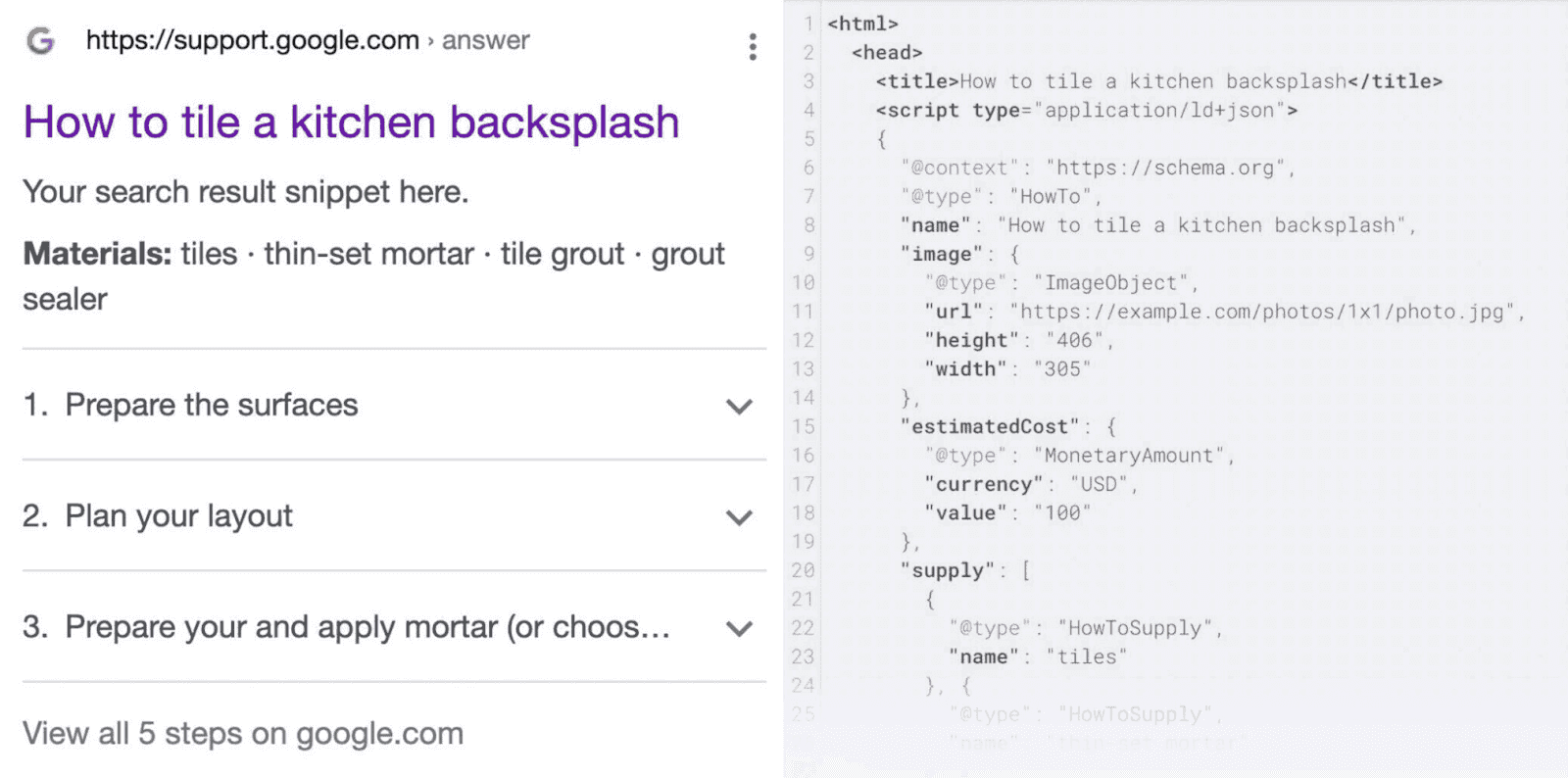
Source: Semrush
Schema markup is the most widely supported piece of structured data by Google. You can use Schema.org to tag your content with information like author, publication date, and ratings.
JSON-LD markup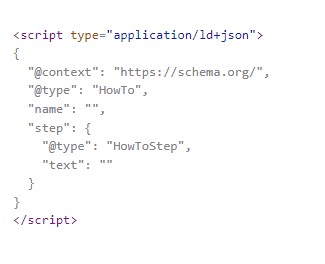
JSON-LD is another structured data markup supported by most major search engines. This particular markup is commonly used to label content with price, availability, and shipping information.
Tip - 4. Submit your sitemap to Google
Once you've created and optimized high-quality content and marked it up with structured data, it’s time to submit your sitemap to Google.
That way, Google can crawl and index your content, allowing it to appear in search results. Don’t skip this step, or your content won't have the chance to appear in any SERP features.
A sitemap is a file that lists all the pages on your website. This file can be in XML or HTML format. Google Search Console can help you create and submit your sitemap to Google.
To submit your sitemap to Google, follow these steps:
Go to Google Search Console.
Click the Sitemap tab.
Click the Add New Sitemap button.
Paste your sitemap URL into the field.
Click the Submit button.

Google will index your sitemap and start crawling your content. It may take some time, but it’s the only way to guarantee that your content can appear in search results.
Tip - 5. Build website authority
How does your website stack up against the other millions of sites on the internet? In other words, how does Google perceive your site's value, reliability, and credibility?
A website with higher authority is more likely to rank higher in the search results.
For instance, high-quality domain stats, such as domain authority, trust, and backlink profiles, can increase the likelihood of scoring a place in competitive SERP features.
So how do you improve your website authority? Follow these simple guidelines:
Prioritize high-quality content creation. Position yourself as an expert with thought leadership content that encourages backlinks, a crucial factor for authority.
Strengthen your backlink profile. Aim for backlinks from other reputable, high-authority websites to boost your trust signal. Use tools like Ahrefs to evaluate potential link sources.
Stay active on social media. Active engagement and sharing on social platforms can lead to more visibility and backlinks, indirectly boosting authority.
Improve the user experience (UX). Make your website user-friendly and mobile-friendly to lower bounce rates.
Building up your website authority is akin to building a brand's reputation in the physical world. It requires consistent dedication, quality assurance, and genuine efforts to provide value.
But as your authority increases, so will your website's prominence in SERP features.
Tip - 6. Track your progress
It's important to track your progress and see how you are doing with SERP feature optimization. That way, you can identify which strategies are working and which need tweaking to improve performance.
One way to track your SERP progress is to use a tool like AccuRanker. Try a free trial today.
With the easy-to-read dashboard, you can quickly see which SERP features drive traffic to your site to help you plan your next move.
Try it yourself with a 14-day free trial. The best part? No credit card is required.
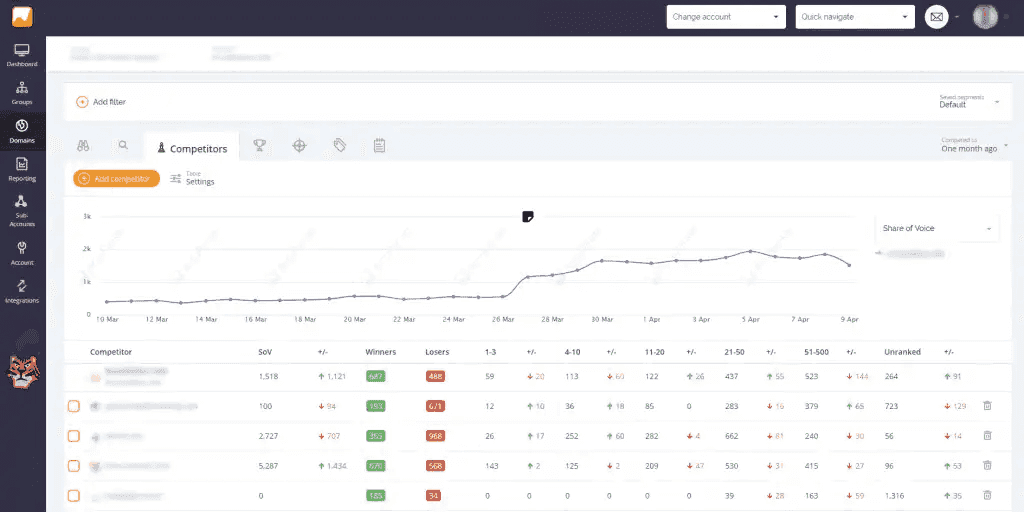
Here are some specific metrics you can track to measure your progress with SERP feature optimization:
Rankings
Clicks
Impressions
Click-through rate (CTR)
Position
By tracking your progress, you can ensure that you are on the right track with SERP feature optimization. Double down on what’s working to help improve your chances of ranking for these features and boost your organic visibility
Jump to the top of search results with SERP features
And there you have it. Tried and true strategies for using SERP features to boost your organic visibility.
As users crave instant information (read: quick answers), optimizing for SERP features yields a competitive edge through higher click-through rates and improved customer trust, strengthening online presence and growth.
Give these SERP strategies a try and watch your online performance gain steam.

Article by:
Juwaria
Freelance Writer
Juwaria is a freelance writer specializing in the fields of SaaS and marketing. Backed with 3+ years of experience, she helps brands build content that adds value to their business. In her free time, you can catch her reading her favorite books or studying the latest trends online.
